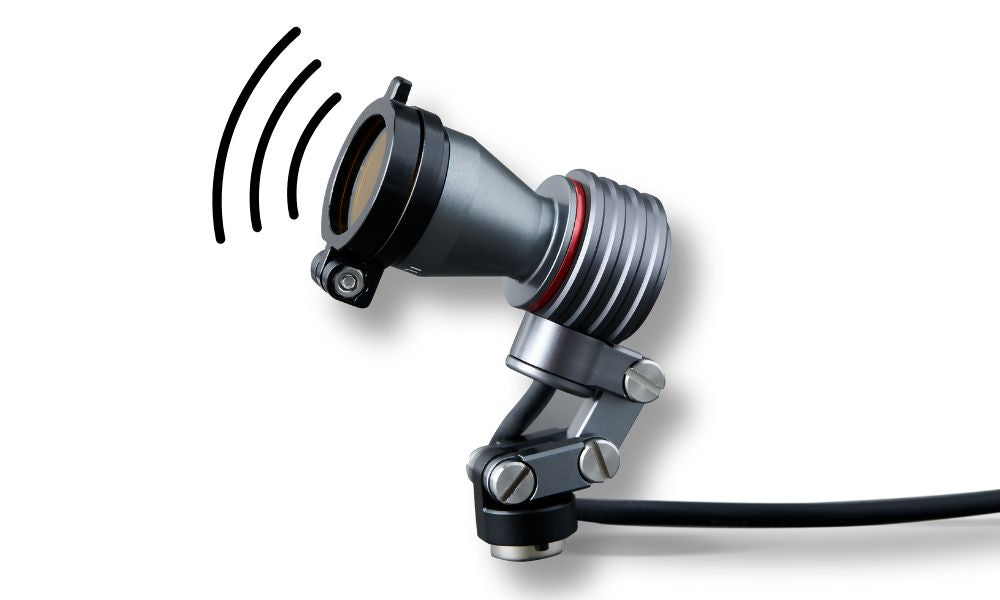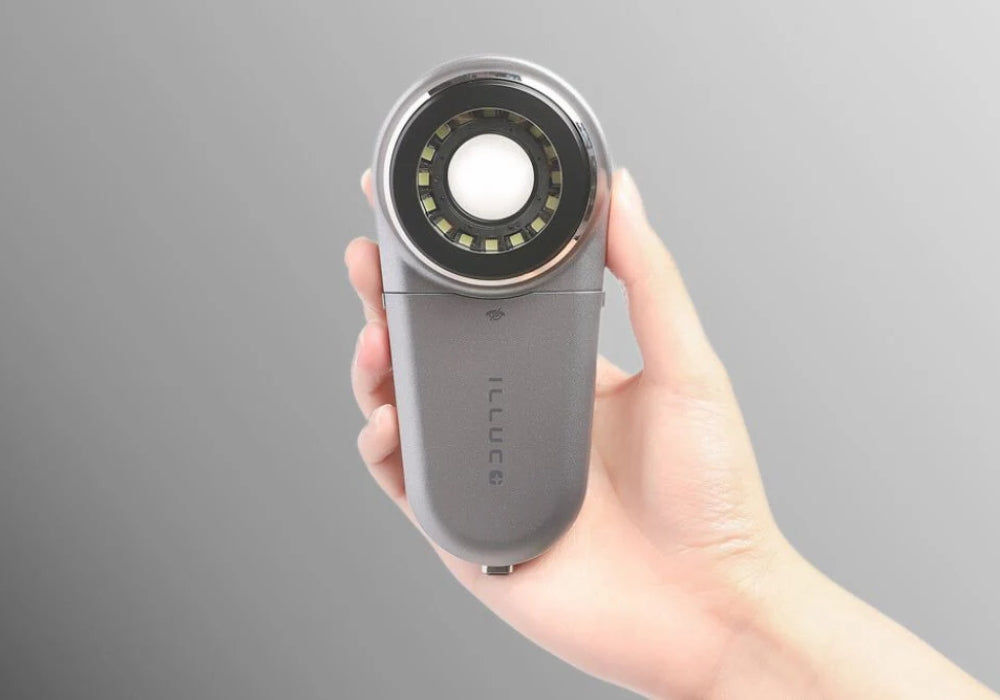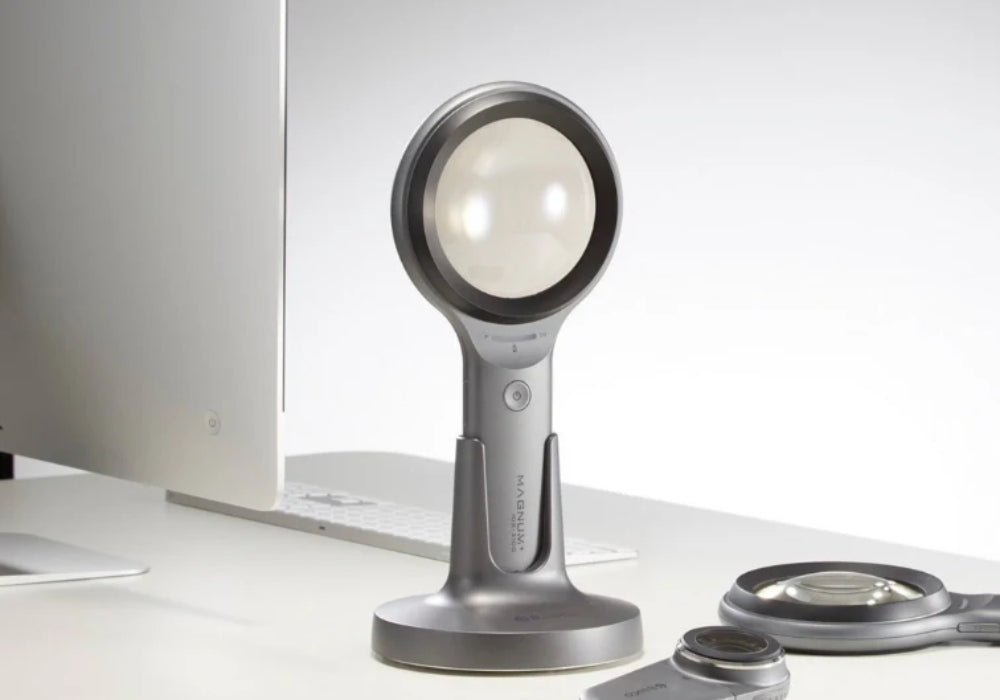Dermatoscope: What is it used for and what does it see?
Dermatoscopes are essential for dermatologists and other healthcare professionals to examine the skin in detail. These devices provide magnified skin views, accurately diagnosing and monitoring various skin conditions. In this article, we will explore the key features and functions of dermatoscopes, helping you understand their importance in dermatology practice.
In the ever-evolving field of dermatology, medical tools play a crucial role in accurate diagnoses and effective treatments. One skin diagnosing tool that has significantly improved the diagnosis and management of skin conditions is the dermatoscope.
Defining Dermatoscopes
A dermatoscope is a handheld device that provides an enhanced view of the skin's surface and underlying structures. It works by brightening and magnifying the skin, allowing dermatologists to examine even the smallest details. The device usually consists of a light source, a magnification lens, and a transparent plate that comes in contact with the skin. This combination of elements provides a clear and in-depth view compared to the naked eye.
According to one 2016 study, there are three main types of dermatoscopes:
Handheld Dermatoscope
This type of dermatoscope is a simple handheld device with a built-in light. They can magnify images by about 10–20 times. They do not connect to a monitor.
Dermatoscope connected to a camera
Illuco has attachments that connect directly to your camera. These attachments are available for Nikon, Sony, and Cannon and can capture skin lesions and cancers in detail.

Dermatoscope connected to a viewing device
This dermatoscope allows for pictures, video, and shared viewing with doctors and patients during the examination. The IDS-1000 Plus, IDS-1100, and IDS-1100 C have attachments that can be used with a camera and smartphones.
Utilization of Dermatoscopes
Dermatoscopes are utilized extensively in dermatology practices, clinics, and hospitals. They have become indispensable in assessing various skin conditions, such as moles, rashes, and lesions. One area where dermatoscopes excel is in the detection of skin cancers. According to skincancer.org, In the past decade (2013 – 2023), the number of new invasive melanoma cases diagnosed annually increased by 27 percent. Given the rising prevalence of skin cancer due to increased UV rays exposure from the sun, early diagnosis is critical for successful treatment.
Importance in Skin Lesions and Cancer Examinations
There is a tremendous importance of dermatoscopes in examining skin lesions and cancers. Dermatologists use these devices to assess skin irregularities that might not be visible to the naked eye—according to the National Libray of Medicine, dermoscopy performed specifically by dermatology-trained clinicians improved the accuracy of identifying melanoma from an odds ratio of 16 (95% CI, 9–31) with naked eye examination to 76 (95% CI, 25–223) with dermoscopy. By using a dermatoscope, doctors can differentiate between harmless growths and potentially malignant ones. This distinction is pivotal for determining the appropriate action, monitoring, biopsy, or immediate treatment.
Efficacy in Dermatology
These instruments empower dermatologists to visualize the intricate details of skin lesions and cancers, leading to more accurate diagnoses. This accuracy aids in avoiding unnecessary surgical procedures and reducing patient anxiety. By identifying potential malignancies early on, dermatologists can create targeted treatment plans that are more effective and less invasive.
Enhancing Dermatology Through Dermatoscopes
The integration of dermatoscopes into dermatological practice has brought about a profound transformation. Previously, skin examinations relied heavily on visual inspection alone, which might not reveal the subtle characteristics of certain skin conditions. Dermatoscopes have elevated dermatology by enabling professionals to view the skin at a microscopic level. This advancement has paved the way for the early detection of skin cancers and other critical skin conditions.
Dermatoscopes can help with
- Skin Lesions: Dermatoscopes aid in identifying and assessing different skin lesions, from harmless moles to more concerning growths.
- UV Rays and Sun Exposure: Dermatoscopes contribute to the assessment of damage caused by excessive sun exposure.
- Common Types of Skin Cancer: Dermatoscopes help distinguish between different types of skin cancers, such as melanoma, squamous cell carcinoma, and basal cell carcinoma.
- Skin Tones and Melanocytes: They enable dermatologists to assess the behavior of melanocytes, the cells responsible for skin pigmentation.
- Actinic Keratosis and Squamous Cell Carcinoma: Dermatoscopes aid in identifying the early signs of actinic keratosis, a precancerous condition that can progress to squamous cell carcinoma.
- Skin Diseases: Dermatoscopes assist dermatologists in diagnosing various skin diseases, allowing for early intervention and prevention.
Conclusion
Dermatoscopes have revolutionized how dermatologists examine, diagnose, and treat skin conditions. These remarkable devices enable healthcare professionals to uncover the hidden details of skin lesions and cancers, ultimately leading to more accurate diagnoses and targeted treatments. As our understanding of skin diseases and the importance of early intervention grows, dermatoscopes remain a vital tool in modern dermatology, driving advancements and ensuring healthier skin for patients of all skin tones and types.
References:
Skincancer.org





Leave a comment
All comments are moderated before being published.
This site is protected by hCaptcha and the hCaptcha Privacy Policy and Terms of Service apply.